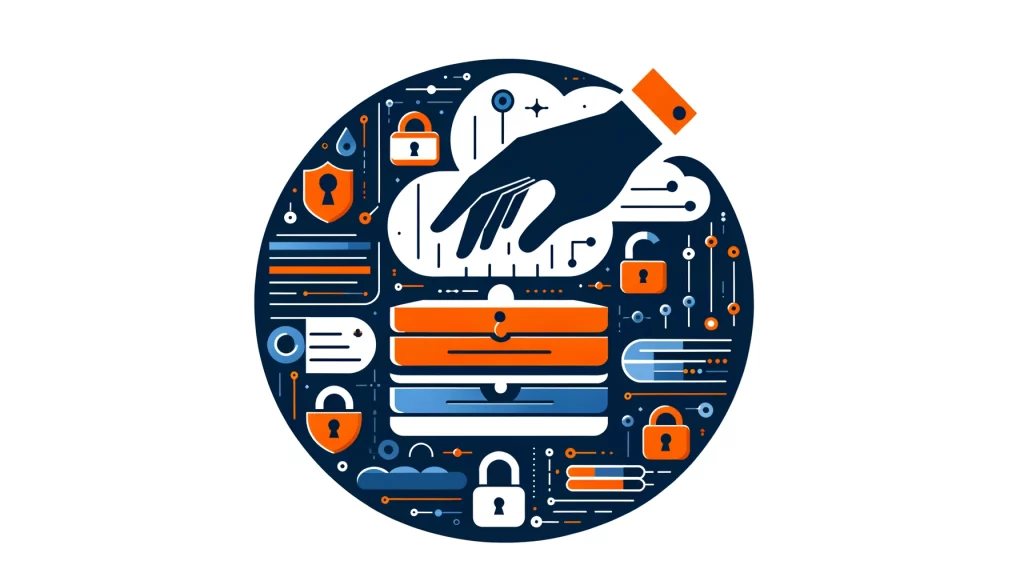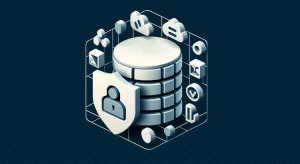
Sensitive Data

Important to recognize that not all data holds equal value or requires the same level of protection. Sensitive data, in particular, demands special attention and safeguarding measures to prevent unauthorized access and potential misuse.
This article explains the importance of sensitive data and ways to keep it secure. It covers strategies for protecting sensitive information.
Defining the Concept of Sensitive Data
Sensitive data is information that needs extra protection because it is confidential, private, or personal.
This data exists in paper or digital form and organizations consider it sensitive based on various factors.
The sensitivity of data depends on its usage. It also depends on the potential consequences of it’s exposure. Additionally, the data protection rules that are in place influence the sensitivity.
Common examples of sensitive data encompass personally identifiable information (PII), such as names, addresses, and social security numbers.
Personal health information (PHI), which includes medical records and treatment details, also falls under this category. Financial information like credit card numbers and bank account details is sensitive because it can be risky if exposed.
Sensitive data can also include things like intellectual property, trade secrets, and classified government information. Each type needs specific protection based on its unique features and the potential harm of unauthorized access.
The Crucial Importance of Safeguarding Sensitive Data
The protection of sensitive data is of utmost importance for several compelling reasons. For starters, it serves to uphold the privacy and security of individuals.
People can use personal information for bad things like stealing someone’s identity or money. This can cause a lot of harm and stress for the people it affects.
Organizations must protect the private information they gather from customers, employees, and partners to maintain trust and security. Their duty is to keep data safe and not misuse it.
Beyond the ethical considerations, there are also stringent legal and regulatory obligations that mandate the protection of sensitive data.
Many countries have laws to protect data, like the GDPR in the EU and the CCPA in the US. These regulations impose rigorous requirements on organizations handling personal data, including provisions for data security, consent, and transparency.
Not following these rules will lead to fines, harm to your reputation, and losing trust from customers.
Moreover, the increasing frequency and sophistication of data breaches and cyber attacks targeting sensitive information underscore the critical need for robust data security measures.
Companies that don’t safeguard data may lose money, face legal issues, lose customer trust, and become less competitive.
Investing in strong data protection strategies is important for legal compliance, ethics, and making smart business choices.
Classifying Data Sensitivity Levels for Effective Protection
To effectively safeguard sensitive data, it is crucial to understand and classify the different levels of data sensitivity. Generally, organizations categorize data into four distinct levels and must use a tailored approach to protect each one.
- Low sensitivity: This level encompasses data that poses minimal or no risk if exposed. Typically, people consider it public information that anyone can access without significant consequences.
- Moderate sensitivity: Data falling under this category is subject to contractual agreements between parties. Monitoring access and ensuring correct usage is important. It may not cause serious harm, but it’s still important to stay vigilant. Ensure using access as agreed upon.
- High sensitivity: This level includes confidential, private, and personal data. Unauthorized access to this information can lead to criminal liabilities, malicious attacks, and other detrimental outcomes, emphasizing the need for stringent protection measures.
- Strict agreements, like NDAs, protect data to keep it safe and confidential. Sharing restricted data can have serious consequences, so it’s important to have strong security measures in place.
Organizations can efficiently use resources by sorting data based on sensitivity. They can apply protection measures tailored to the specific needs of each type of data. Matching protection measures to the sensitivity of the data helps ensure that organizations allocate valuable resources effectively. This approach also helps organizations prioritize their security efforts and focus on protecting their most sensitive information.
Implementing Comprehensive Data Protection Measures
Organizations must use various methods, both technical and non-technical, to keep sensitive data safe. Some key steps to consider include:
- Data encryption: Encrypting sensitive data, both at rest and in transit, is a fundamental security measure. Strong encryption protects sensitive information from unauthorized access, even if others intercept or steal it.
- Access control: Implementing robust access control policies is essential to restricting unauthorized access to sensitive data. This includes measures such as strong password management, two-factor authentication, and the use of security tokens.
- Data cataloging: Maintaining a comprehensive inventory of sensitive data assets and limiting access to these catalogs is crucial for effective data management. Organizations track where sensitive information is, who can access it, and how it is used to control it. This helps them detect security risks.
- Limiting how often you send data can help reduce the risk of unauthorized access. Implementing secure data transfer protocols and monitoring data flows can further enhance the security of sensitive information during transmission.
- Protect sensitive data by storing it on secure servers, disconnected storage devices, or physically restricted devices for extra security. By isolating sensitive information from general network access and implementing strict access controls, organizations can significantly reduce the risk of data breaches.
In addition to these technical measures, organizations must also prioritize employee training and awareness. Training employees on data security, handling sensitive information, and identifying threats is crucial for a strong data protection plan.
Regular training, security campaigns, and clear communication of policies can create a culture of data protection. This empowers employees to protect sensitive data and be active in safeguarding it.
Continuous Monitoring and Incident Response
Keeping sensitive data safe is an ongoing process that needs constant monitoring and adjustments. Organizations must establish robust monitoring systems to detect and respond to potential security incidents promptly.
This includes implementing intrusion detection and prevention systems, conducting regular vulnerability assessments, and monitoring user activity and data access patterns.
If a data breach or security incident occurs, having a well-defined incident response plan is crucial.
This plan will detail the steps to handle the incident. Also investigate the cause of the incident. Additionally, it will work to minimize the impact on both people and the organization.
Informing the right people quickly is important. Also important to be open about fixing problems. This will help maintain trust and protect your reputation.
Conclusion
In today’s digital world, it is important for organizations to protect sensitive data for legal, ethical, and strategic reasons.
Organizations need to know what sensitive data they have. They should use strong security measures to protect this information. Additionally, they should promote a culture of data protection to maintain stakeholders’ trust.
However, the evolving threat landscape and the increasing sophistication of cyber attacks necessitate continuous vigilance and adaptability.
Organizations need to stay ahead in protecting their data. They should regularly review and update their security strategies to tackle new challenges and meet changing regulations.
Ultimately, the protection of sensitive data is a shared responsibility that requires the commitment and collaboration of individuals, organizations, and regulatory bodies.
